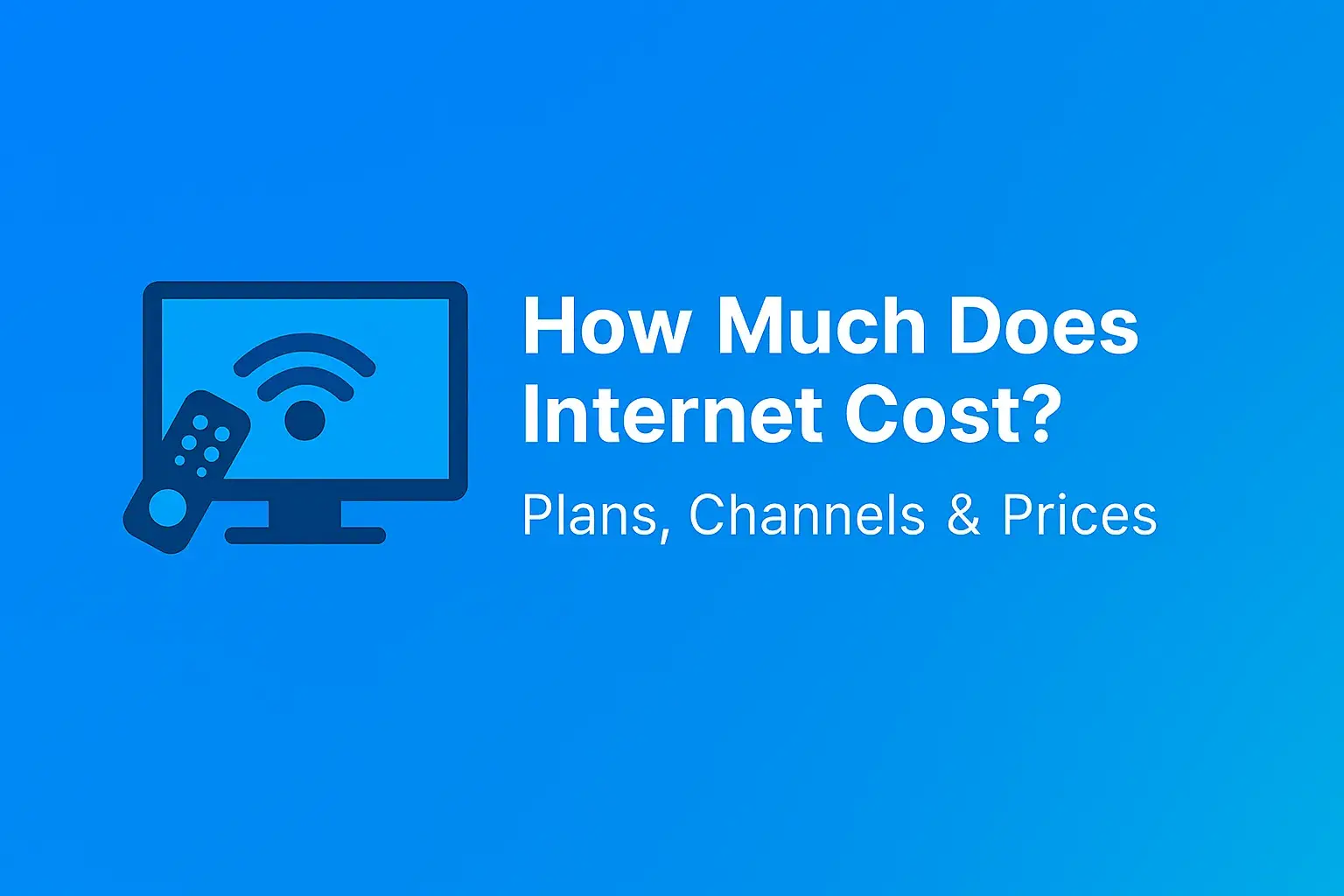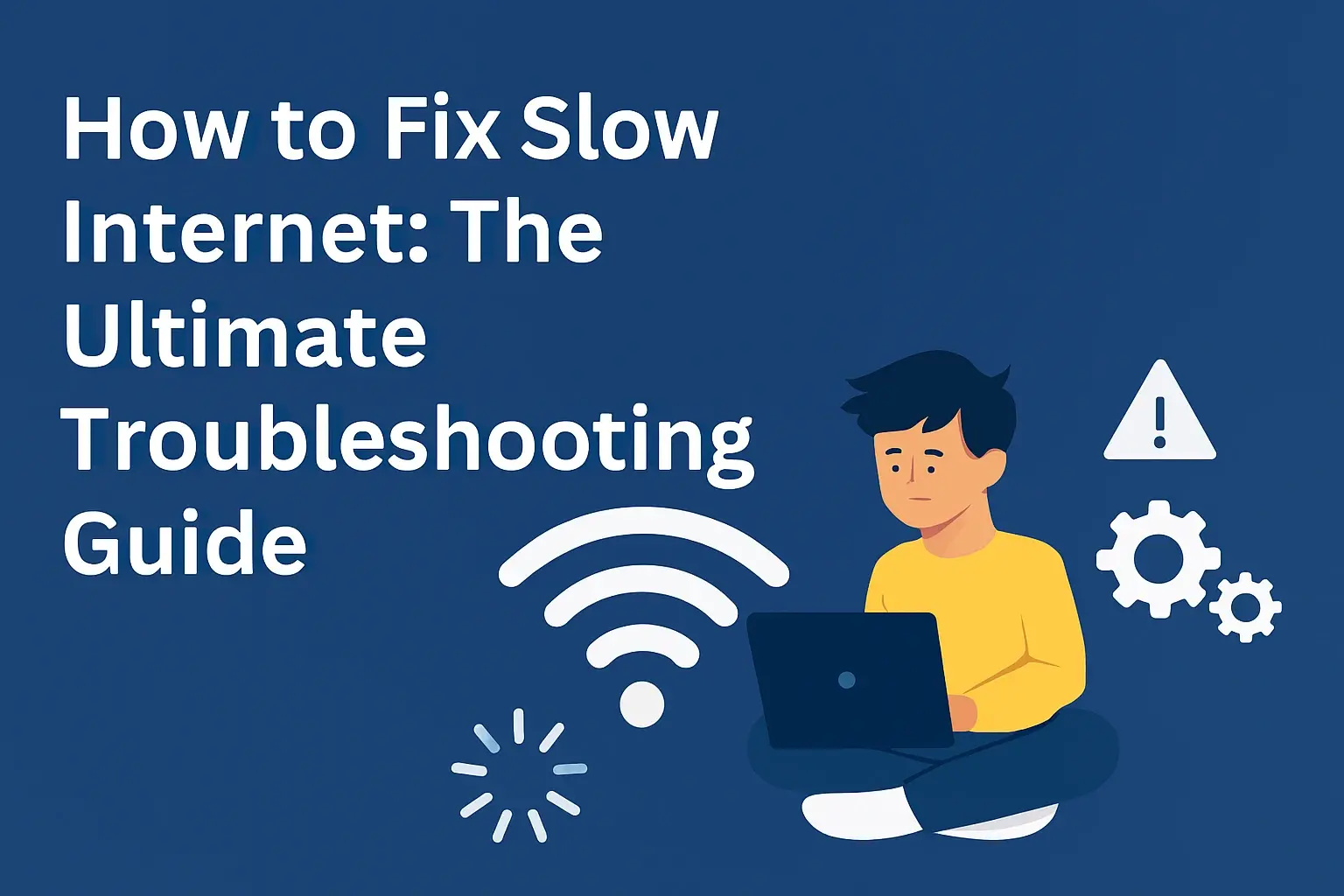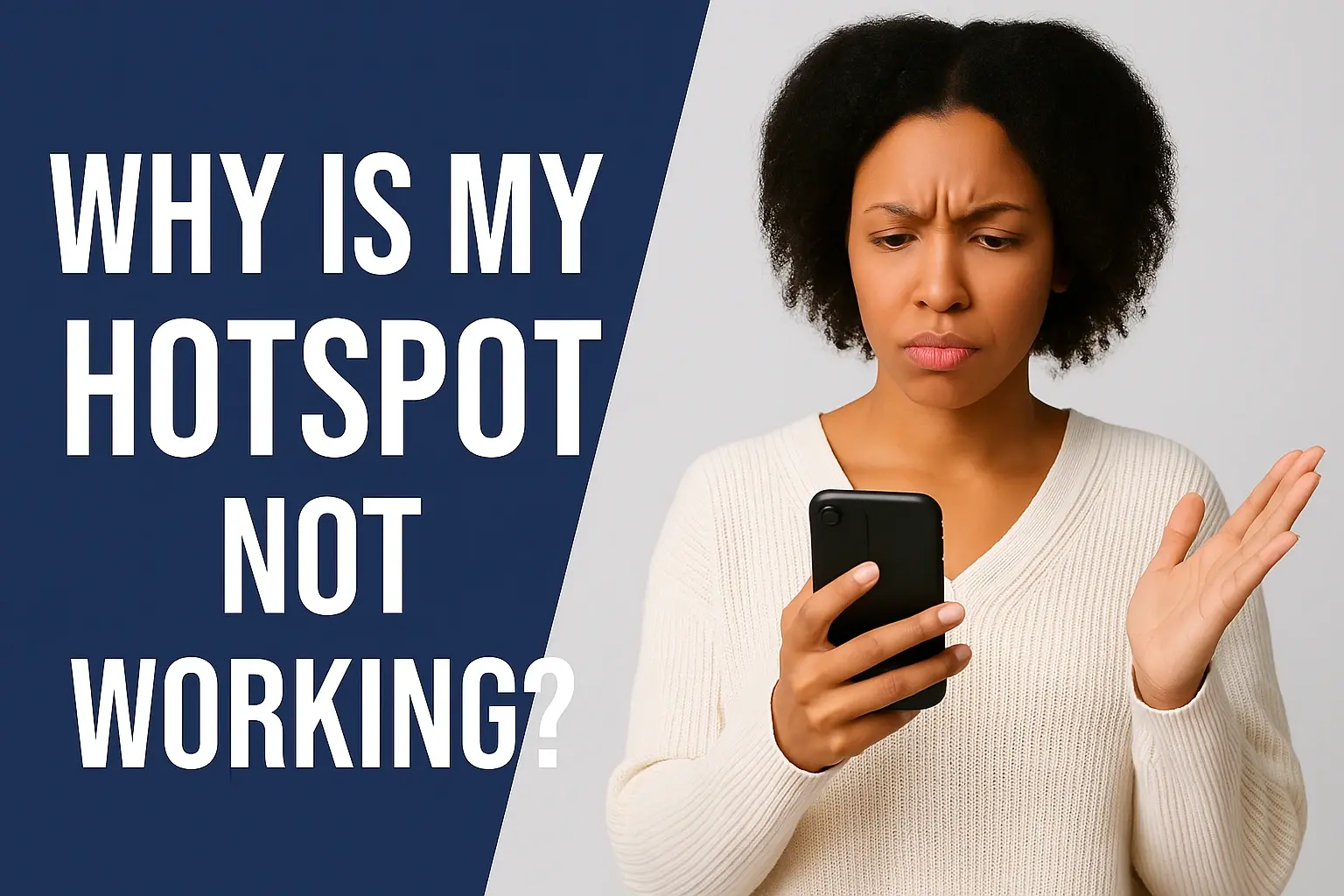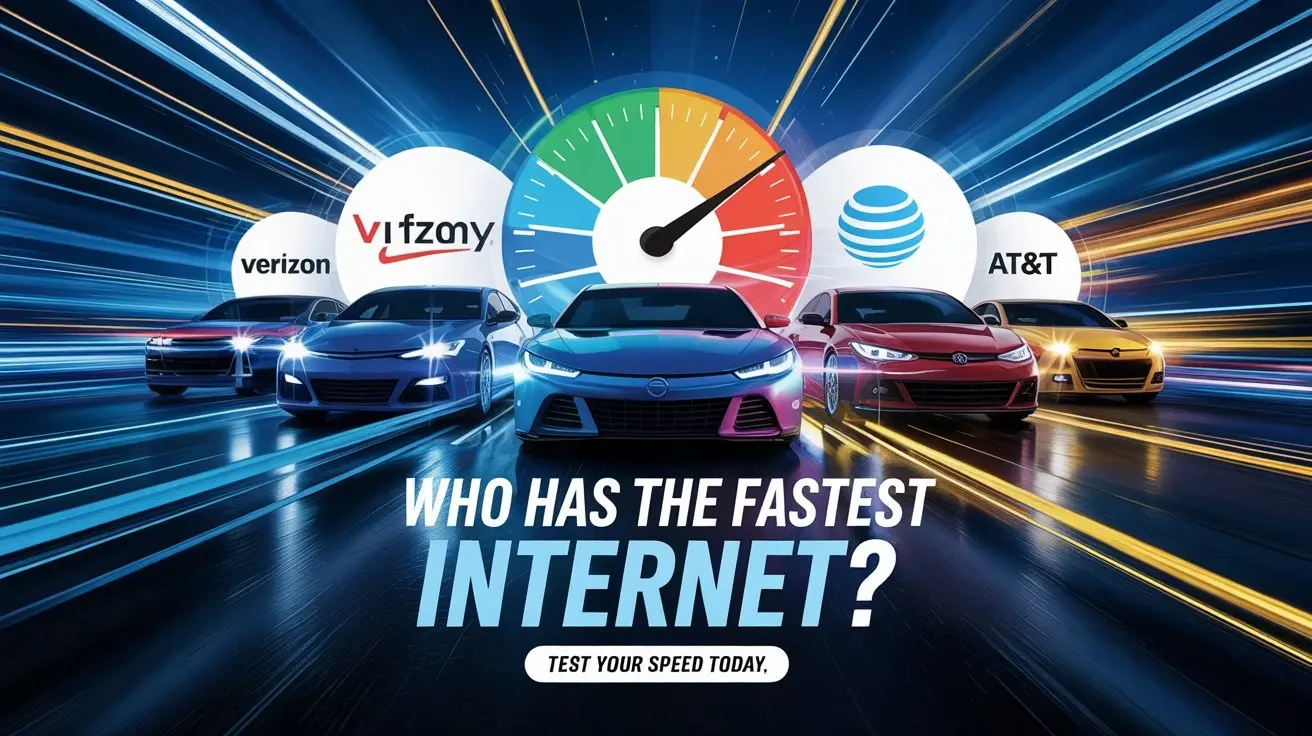How Much Does Internet Cost? Complete 2025 Guide

In 2025, a reliable, high-speed internet connection is no longer a luxury; it's an essential utility, as crucial as electricity or running water. It powers our work, education, entertainment, and social connections. Yet, answering the seemingly simple question, "How much does the internet cost?" is more complex than ever. The price you see advertised is rarely the price you end up paying, and the options vary wildly based on where you live, what services are available, and a myriad of other factors.
This guide is designed to cut through the confusion. We will provide a clear, detailed, and up-to-date breakdown of internet pricing in 2025. We'll move beyond the promotional teaser rates to explore the real average internet cost in 2025, dissect pricing by technology like fiber vs cable internet cost, and compare offerings from all the major players. Most importantly, we'll arm you with the knowledge to identify hidden fees and leverage strategies to ensure you're not overpaying. Whether you're a remote worker requiring gigabit speeds or a budget-conscious streamer, this guide will help you find the best value for your needs.
Section 1: The National Average Internet Cost in 2025
So, what can the typical American household expect to pay for internet service this year? After extensive analysis of industry data and consumer bills, we've determined that the average internet cost in 2025 for a standard standalone broadband plan (100-200 Mbps) hovers between $75 and $85 per month.
This figure represents a slight increase from previous years, continuing a steady upward trend. However, this national average is just a starting point. It's a blend of ultra-fast, premium fiber internet costs and more affordable, but slower, DSL and cable plans. Your actual monthly bill is influenced by several key factors:
-
Geographic Location: This is the single biggest determinant. Urban and suburban areas with multiple providers benefit from competition, which drives prices down. Rural areas often have only one or two options (typically satellite or DSL), leading to higher prices for inferior service.
-
Market Competition: In markets where Google Fiber or a strong regional fiber provider enters, incumbent providers like Comcast and AT&T often respond with aggressive pricing and faster speed upgrades.
-
Inflation and Operational Costs: ISPs cite rising costs for network maintenance, expansion, and technology upgrades as reasons for periodic price hikes.
-
Government Regulation: The end of the Affordable Connectivity Program (ACP) in 2024 removed a critical subsidy for millions, effectively raising the net cost of internet for low-income households, though some provider-specific low-cost plans remain.
Understanding this average and the factors behind it sets the stage for a deeper dive into the specific elements that will define your own internet expense.
Section 2: Internet Costs by Type of Connection
Not all the internet is created equal. The technology delivering your signal plays a massive role in its performance and, consequently, its price. Here’s a breakdown of the major connection types and their associated costs in 2025.
Fiber-Optic Internet: The Premium Performer
Fiber internet, which uses light pulses through glass cables, offers the fastest, most symmetrical (equal upload and download speeds), and reliable connection available.
-
Average Monthly Cost: $70 - $150+
-
Typical Speed Range: 300 Mbps - 5 Gigs (5000 Mbps)
-
Pros: Blazing fast, incredibly reliable, low latency, excellent for large households, heavy uploaders (gamers, streamers, remote workers).
-
Cons: Limited availability, often the most expensive option.
-
Ideal For: Power users, smart homes, families with multiple heavy streamers and gamers.
Cable Internet: The Widespread Workhorse
Cable internet is the most widely available type of broadband in the U.S., using the same coaxial lines as cable TV. Speeds are fast, but can slow down during peak usage times in your neighborhood (network congestion).
-
Average Monthly Cost: $50 - $120
-
Typical Speed Range: 100 Mbps - 1.2 Gbps (1200 Mbps)
-
Pros: Wide availability, high download speeds, often bundled with TV.
-
Cons: Slower upload speeds, prone to congestion, prices can rise sharply after the promo period.
-
Ideal For: Most typical households that stream, browse, and game.
DSL Internet: The Budget, Low-Speed Option
Digital Subscriber Line (DSL) service runs through traditional copper phone lines. It's widely available but significantly slower and less reliable than cable or fiber.
-
Average Monthly Cost: $35 - $70
-
Typical Speed Range: 5 Mbps - 100 Mbps
-
Pros: Often the cheapest option, widely available.
-
Cons: Slow speeds, especially for uploads; reliability decreases with distance from the provider's hub.
-
Ideal For: Individuals or couples with very basic needs (email, browsing, single SD video stream).
5G Home Internet: The Disruptive Newcomer
5G home internet from mobile carriers like T-Mobile and Verizon is shaking up the market. It provides wireless internet via the 5G cellular network to a fixed modem in your home.
-
Average Monthly Cost: $50 - $70 (often with price guarantees and no contracts)
-
Typical Speed Range: 50 Mbps - 300 Mbps (highly variable based on signal strength)
-
Pros: Easy setup (plug and play), no contracts, no data caps, competitive pricing.
-
Cons: Speeds can be inconsistent and vary by location, weather, and network traffic; latency can be higher than wired options.
-
Ideal For: Urban/suburban users with strong 5G signals, cord-cutters, those seeking simplicity and no contracts.
Satellite Internet: For Remote and Rural Areas
Satellite internet from providers like Starlink, HughesNet, and Viasat beams a signal from satellites in space. Its key advantage is availability anywhere with a view of the southern sky.
-
Average Monthly Cost: $90 - $120+ (Starlink is typically premium; older tech is cheaper but slower)
-
Typical Speed Range: 25 Mbps - 200 Mbps (Starlink can go higher)
-
Pros: Available almost anywhere.
-
Cons: High latency (not ideal for real-time gaming or video calls), weather-sensitive, often has strict data caps, and expensive equipment costs.
-
Ideal For: Rural homes and cabins with no other viable options.
Summary Table: Internet Cost by Connection Type
| Connection Type | Avg. Monthly Cost (2025) | Best For | Key Consideration |
|---|---|---|---|
| Fiber | $70 - $150+ | Power users, large families | Limited availability |
| Cable | $50 - $120 | Most urban/suburban households | Prices often rise after 1-2 years |
| DSL | $35 - $70 | Budget users, basic browsing | Slow speeds, unreliable |
| 5G Home | $50 - $70 | Flexible users, cord-cutters | Speed depends on the cell signal |
| Satellite | $90 - $120+ | Rural areas with no other options | High latency, weather issues |
Section 3: Internet Costs by Speed Tier
Choosing the right speed is crucial to avoiding overpaying for bandwidth you don't need or suffering with a connection that can't keep up. Here’s how internet cost by speed typically breaks down.
-
50-100 Mbps Plan ($40 - $60/month): Suitable for 1-2 users. Handles HD streaming, video conferencing, and casual gaming smoothly. May struggle if multiple devices are demanding bandwidth simultaneously.
-
200-400 Mbps Plan ($60 - $80/month): The new sweet spot for many families. Easily supports 4K streaming on multiple devices, online gaming, and working from home without hiccups. This is often the best value plan.
-
Gigabit (1000 Mbps) Plan ($80 - $120/month): Designed for heavy-use households. Perfect if you have many smart devices, are a serious gamer, work with large files, or have 4+ people all streaming and downloading at once. The cost of gigabit internet has fallen significantly and is now a competitive offering.
-
Multi-Gigabit Plans (2+Gbps) ($120 - $150+/month): Overkill for 99% of households. Useful for elite gamers, home businesses running servers, or incredibly tech-dense smart homes.
The Best Value: For most families, the 200-400 Mbps tier offers the best balance of performance and price. It provides ample bandwidth for today's needs and a buffer for future growth without the premium price tag of gigabit plans.
Section 4: Internet Costs by Provider
The provider you choose is perhaps the most direct factor influencing your bill. Let's examine the internet cost by provider for the major players in 2025. *(Note: All intro prices are for standalone internet and typically last for 1-2 years. Equipment fees are extra.)*
Comcast Xfinity
As one of the nation's largest cable providers, Xfinity's prices and plans vary greatly by region.
-
Price Range: $35 - $120/month
-
Intro Offers: Promotional rates like "200 Mbps for $35/mo" are common but require a 1- or 2-year contract in most areas.
-
Key Consideration: Prices can jump dramatically after the promotional period. Using your own compatible modem can save $15-$20 monthly on equipment rental fees.
Spectrum
Spectrum is a major cable provider that famously has no data caps and does not require contracts.
-
Price Range: $50 - $90/month
-
Intro Offers: Standard pricing is often consistent, starting at around $50/mo for 300 Mbps. They rarely do steep introductory discounts that later explode.
-
Key Consideration: While no contracts are a plus, Spectrum is known for annual price increases, often adding $5-$7 to your bill each year.
AT&T Internet
AT&T offers both DSL and a rapidly expanding fiber network. Your experience and cost depend entirely on which service is at your address.
-
Price Range (Fiber): $55 - $180/month
-
Intro Offers: AT&T Fiber plans are competitive, often starting at 300 Mbps for $55/mo or 1 Gig for $80/mo.
-
Key Consideration: If you can get AT&T Fiber, it's often a top contender. Their DSL service, however, is generally slower and less competitive in price.
Verizon Fios
A pure fiber-optic provider in the Northeast, Fios is renowned for its reliability and symmetrical speeds.
-
Price Range: $50 - $120/month
-
Intro Offers: Verizon is aggressive with pricing, often matching or beating competitors. Mix-and-match pricing lets you choose your internet plan without a TV bundle.
-
Key Consideration: Verizon Fios often includes a free router rental with its plans, which can provide savings compared to providers that charge rental fees.
T-Mobile & Verizon 5G Home Internet
These mobile giants are the biggest disruptors in the market.
-
Price Range: $50 - $70/month (with autopay)
-
Intro Offers: They often offer price-lock guarantees, free trials, and significant discounts for existing mobile customers.
-
Key Consideration: Verizon 5G home internet and T-Mobile home internet costs are simple and all-inclusive. There are no contracts, and equipment rental is included in the monthly price. Performance is entirely location-dependent.
Regional Providers & Google Fiber
Don't overlook smaller regional providers or Google Fiber if they are in your area. They often provide the cheapest internet plans and superior customer service to drive competition. Google Fiber, though limited in availability, is famous for its straightforward, flat-rate pricing (e.g., $70 for 1 Gig) with no hidden fees or annual increases.
Section 5: Hidden Fees & Extra Costs
The advertised promo price is a lure. The real cost is revealed in the fine print. To understand your true internet cost, you must account for these common additional fees.
-
Modem/Router Rental Fee: This is the most common add-on fee, typically costing $10 - $15 per month. Over a year, that's $120-$180 you could save by purchasing your own compatible modem and router for a one-time cost of $100-$200.
-
Professional Installation Fee: While many providers now offer self-install kits (for a smaller fee of ~$20), a professional install can cost $50 - $100.
-
Data Overage Charges: Some providers (like Xfinity in certain areas) still enforce a 1.2 TB data cap. Exceeding it can result in charges of $10 per 50GB, up to a maximum of $100 extra per month. Unlimited data often costs an additional $30/month.
-
Taxes and Regulatory Recovery Fees: These are government-imposed fees that ISPs pass through to you, usually adding $5 - $10 to your bill.
-
Annual Price Hikes: Even if you avoid all the fees above, your base price is almost guaranteed to increase by $5 - $10 per month after your promotional period ends.
Always read the terms of service and ask for a full breakdown of all monthly charges before signing up.
Section 6: Pro Tips: How to Save on Your Internet Bill
You don't have to accept the sticker price. Here are effective strategies to reduce your monthly internet bill.
-
Buy Your Own Modem and Router: This is the easiest way to save. The equipment pays for itself in less than a year and continues saving you money indefinitely.
-
Negotiate with Your Provider: Call customer retention and politely ask for a better deal. Mention competitor offers in your area. Loyalty discounts are real and can often shave $20-$30 off your bill for another year.
-
Qualify for Government or Low-Income Programs: While the ACP has ended, the Lifeline program still provides a $9.25/month discount on phone or internet service for qualifying low-income households. Providers like Comcast (Internet Essentials) and Spectrum (Internet Assist) also have their own dedicated cheapest internet plans for eligible families, often costing around $20/month.
-
Re-evaluate Your Speed Needs: Are you paying for a gigabit plan but only browsing the web? Downgrading to a 200-400 Mbps plan can save you $30-$40 per month with no noticeable difference in performance for most activities.
-
Bundle Services (Cautiously): Bundling internet with TV or phone can sometimes save money, but often these bundles are filled with hidden fees and expensive broadcast TV surcharges. Crunch the numbers carefully on standalone services vs. the bundle.
Section 7: The Future of Internet Pricing
The internet landscape is evolving rapidly, and pricing models are shifting with it.
-
5G Expansion: As 5G home internet from T-Mobile and Verizon continues to expand, it will place downward pressure on traditional cable monopolies, forcing more competitive pricing and the elimination of things like data caps and contracts.
-
Fiber Buildout: The continued expansion of fiber networks, fueled by private investment and government grants, will bring more competition and better value to more markets, gradually lowering the cost of fiber internet.
-
Transparency Trends: Consumer pressure is pushing providers toward more transparent, "all-in" pricing models, similar to what we see with 5G home internet and Google Fiber.
-
Predictions for 2026: We expect the national average cost to stabilize or even slightly decrease in competitive markets, while rural areas will see better options (via expanded 5G and satellite) but likely at a higher premium than urban pricing. The era of steep post-promo price hikes may be numbered as consumers become more savvy and mobile.
Conclusion: Finding Your Perfect Plan in 2025
Determining how much the internet costs is a personal calculation. The average internet cost in 2025 is between $75 and $85, but your final bill depends on your location, the technology available to you, the provider you choose, and your vigilance against hidden fees.
The best approach is to:
-
Check your address to see which providers and connection types (fiber, cable, 5G) are available.
-
Audit your household's actual speed needs—don't overpay for bandwidth you won't use.
-
Compare the total cost from each provider, including modem rental fees, and after the promotional period ends.
-
Leverage competition and be prepared to negotiate or switch providers to get the best value.
By arming yourself with the knowledge in this guide, you can navigate the market confidently and secure a reliable internet connection that fits your needs and your budget.
Faq
What is the average monthly internet cost in the USA?
The average monthly internet cost in the USA in 2025 is around $78, including autopay discounts but excluding equipment fees. This can vary by region, with urban areas paying less ($60-80) and rural spots higher ($90-120) due to technology limitations. Check www.ctvforme.com for local averages.
How much does fiber internet cost compared to cable?
Fiber internet averages $85 monthly, offering better speeds and value ($0.04/Mbps) than cable's $59 average ($0.10/Mbps). Fiber provides symmetric uploads, while cable is more available but prone to slowdowns.
Is satellite internet more expensive than DSL?
Yes, satellite averages $121 monthly versus DSL's $60. Satellite suits rural areas but has high latency; DSL is cheaper but slower.
What is the cheapest internet provider in 2025?
Spectrum and Xfinity offer some of the cheapest plans, starting at $30 for 100 Mbps. For low-income, programs like Internet Essentials provide $15 options.
How much does rural internet cost vs urban internet?
Rural internet costs $90-120 monthly, often via satellite, while urban is $60-80 with fiber/cable options due to competition.
Do internet bundles really save money?
Yes, bundles can save 10-30% by combining internet with TV/phone, but compare to standalone plans as promos may expire.
Can I negotiate my monthly internet bill?
Absolutely—call your ISP, mention competitors, and request discounts. Many secure 10-20% off or free upgrades.
How much does business internet cost compared to home internet?
Business plans cost $100-300 monthly for dedicated lines and SLAs, versus home's $50-100, due to reliability needs.
Where can I check available internet providers near me?
Use www.ctvforme.com to search by ZIP code for providers, plans, and pricing in your area.
What are student internet plans in 2025?
Many providers offer $20-30 discounts for students, like Cox or Xfinity, often bundled with low-cost options for verified enrollees.





